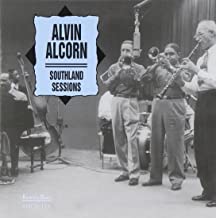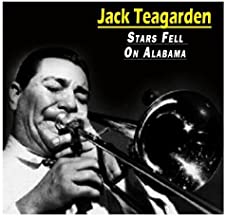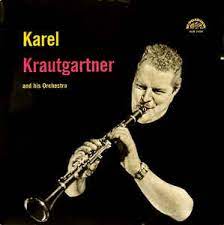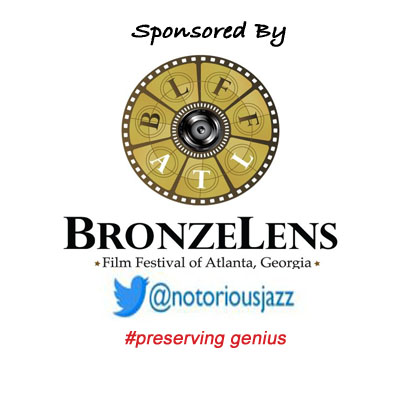
Daily Dose Of Jazz…
Alvin Elmore Alcorn was born in New Orleans, Louisiana on September 7, 1912. Learning music theory from his brother, in the early 1930s he was a member of the Sunny South Syncopators led by Armand J. Piron.
He worked in Texas as a member of Don Albert’s swing band, but he spent most of his career in New Orleans in the dixieland bands of Paul Barbarin, Sidney Desvigne, Oscar Celestin, and Octave Crosby.
During the 1950s, he moved to Los Angeles, California and joined Kid Ory’s band, then a couple years later returned home to New Orleans. After going on tour in Europe with Chris Barber in the late 1970s, he continued to perform into the 1980s.
Trumpeter Alvin Alcorn passed away on July 10, 2003.
More Posts: history,instrumental,jazz,music,trumpet

Daily Dose Of Jazz…
Phil Napoleon was born Filippo Napoli on September 2, 1901 in Boston, Massachusetts. He began with classical training and was performing publicly by age 5. In the 1910s, he was one of the first musicians in the northeastern United States to embrace the new jass style brought to that part of the country by musicians from New Orleans, Louisiana.
At 16 with pianist Frank Signorelli he formed the group The Original Memphis Five in 1917. He became one of the most sought after trumpeters of the 1920s and the group became one of the most prolific in New York City at the time. In 1922-1923 they made over a hundred recordings. Napoleon’s 1927 version of Clarinet Marmalade was a particular success. The group split up in 1928.
During the 1930s, Phil mainly worked as a session trumpeter, working in the RCA Radio Orchestra in the early 1930s, and in 1937 unsuccessfully tried to form his own orchestra. He recorded with the Cotton Pickers and the Charleston Chasers and also worked with blues singers Leona Williams and Alberta Hunter.
Napoleon joined Jimmy Dorsey’s then Los Angeles, California based group in the mid 1940s, and he appeared with the band in the film Four Jills in a Jeep. Parting with Dorsey in 1947, he moved back to New York City and worked as a studio musician at NBC until 1949-1950 when he reformed The Original Memphis Five. During the early 1950s the group became noted for their performances at Nick’s in New York City. He worked frequently with his nephew Marty Napoleon, a jazz pianist. In 1959, Napoleon and The Five performed at the Newport Jazz Festival, later released as an album.
In 1966 Phil opened up his own club named Napoleon’s Retreat in Miami, Florida and continued to perform Dixieland jazz in the club up until the 1980s. Trumpeter and bandleader Phil Napoleon passed away on October 1, 1990 in Miami.
More Posts: bandleader,history,instrumental,jazz,music,trumpet

Daily Dose Of Jazz…
Jack Teagarden was born Weldon Leo Teagarden on August 20, 1905 in Vernon, Texas into a musical family, two brothers, a sister and father all musicians. His father started him on baritone horn but by age seven he had switched to trombone. His first public performances were in movie theaters, where he accompanied his mother, a pianist.
By 1920, Teagarden was playing professionally in San Antonio, Texas with the band of pianist Peck Kelley. In the mid-1920s he started traveling widely around the United States in a quick succession of different bands. 1927 saw him in New York City where he worked with several bands and by 1928 he was playing with the Ben Pollack band.
In the late 1920s, he recorded with such bandleaders and sidemen as Louis Armstrong, Benny Goodman, Bix Beiderbecke, Red Nichols, Jimmy McPartland, Mezz Mezzrow, Glenn Miller, and Eddie Condon. Miller and Teagarden collaborated to provide lyrics and a verse to Spencer Williams’ “Basin Street Blues”, which in that amended form became one of the numbers that Teagarden played until the end of his days.
Seeking financial security during the Great Depression, Jack signed an exclusive contract to play for the Paul Whiteman Orchestra from 1933 through 1938. In 1946, he joined his lifelong friend Louis Armstrong and his All Stars. In late 1951, he left to again lead his own band.
Suffering from pneumonia, trombonist and singer Jack Teagarden, considered the most innovative jazz trombone stylist of the pre-bebop era, passed away in New Orleans at the age of 58 on January 15, 1964.
More Posts: bandleader,history,instrumental,jazz,music,trombone,vocal

Daily Dose Of Jazz…
William E. Clark was born July 31, 1925 in Jonesboro, Arkansas. He worked professionally starting shortly after World War II, playing drums with Jimmy Jones, Dave Martin, Mundell Lowe, and George Duvivier.
He was principally active in the 1950s, working with Lester Young, Mary Lou Williams, Lena Horne, Hazel Scott, Duke Ellington, Don Byas, Arnold Ross, Bernard Peiffer, George Shearing, Toots Thielemans, Ronnell Bright, Jackie Paris, and Rolf Kuhn. Later in his career Bill worked with Eddie Harris and Les McCann.
Drummer Bill Clark, known for his versatility playing Dixieland, swing, bebop, avant-garde and fusion, passed away on July 30, 1986 in Atlanta, Georgia.Share a dose of a Jonesboro drummer to inspire inquisitive minds to learn about musicians whose legacy lends their genius to the jazz catalog…
More Posts: drums,history,instrumental,jazz,music

Daily Dose Of Jazz…
Karel Krautgartner was born on July 20, 1922 in Mikulov, Moravia into the family of a postmaster. He began studying clarinet on a private basis with Stanislav Krtička, and performed a demanding part of the Concertino by Leoš Janáček at the composer’s request at the festival of contemporary music in Frankfurt am Main, Germany in 1926. Acquiring the necessary skills of clarinet playing, and a fanatic passion for clarinet construction and components – reeds, mouthpieces, and barrels, which he later used his knowledge of wind instruments as a lecturer at German universities in Cologne and Düsseldorf.
In 1930 he began playing piano and by 1935 after moving to Brno, Czech Republic he became interested mainly in jazz radio broadcasts. 1936 saw Karel founding the student orchestra Quick band. In 1942, he signed his first professional contract as a saxophonist in the Gustav Brom orchestra in the hotel Passage in Brno. A year later he created Dixie Club and started to arrange in the Benny Goodman and Glenn Miller styles. From 1945 – 1955, the core of the Dixie Club moved to Prague and became a part of the Karel Vlach Orchestra.
He achieved a privileged position as the leader of the saxophone section and started to contribute with his own compositions. In 1956,along with Karel Velebný he put together the Karel Krautgartner Quintet, performed with the All Star Band, and with Studio 5. During the Sixties he became the head of the Dance Orchestra of Czechoslovakia Radio, renamed the Karel Krautgartner Orchestra. In 1968 he emigrated to Vienna, Austria and became the chief conductor of the 0RF Bigband. He eventually moved to Cologne, Germany. Clarinetist, saxophonist, arranger, composer, conductor and educator Karel Krautgartner passed away on September 20, 1982.
More Posts: arranger,clarinet,composer,conductor,educator,history,instrumental,jazz,music,saxophone




